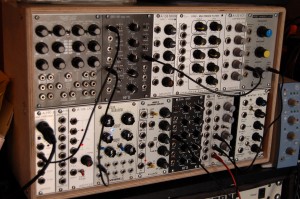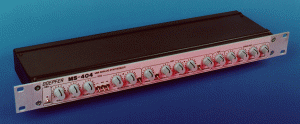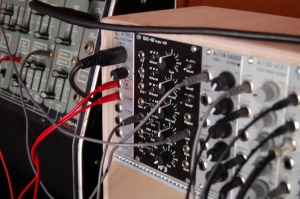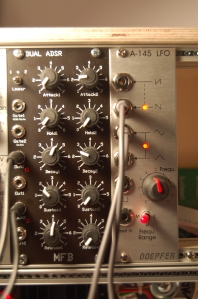The 4 filters:
- Doepfer A-120
- STG Soundlabs Post-lawsuit LPF
- Analog Systems RS-500 e
- Analogue Solutions SY02 Multimode filter
The oscillator: MFB OSC02 Triple VCO
The two filters that can be directly compared are the A120 and the STG, they are both 4 pole, 24dB slope ladder filters.
Ladder filters copy the classic “moog filter” (electronically speaking) so they have a very definite cut , a really fast response to modulations and oscillates at full resonance generating a sine wave.
The DOEPFER A120 was concived as the classic moog emulator but it doesn’t sound moogish at all, it is very clear and have a minimal touch to the sound, it lacks the organic carachter of the ladder moog, but it’s perfect for other tasks as aggressive minimal sounds or percussions.
The STG LPF emulates the ARP 2600 filter “post lawsuit” (the one used after the legal problems with R.Moog). I tried this filter face to face with the original and it is quite similar but not the same, but it retains the warmth and power. The only downfall of this filter is a kind of bleed you can hear as the resonance increase, not very pleasant but all in all tolerable. This filter has 2 freq inputs and 2 signal inputs all without attenuators, 1 amount input and a audio output.
The Analogue Solutions SY02 was dsigned as a Korg MS 20 filters and vca clone. It consist of a highpass + lowpass filters both with resonance and amount and a vca. The sound is raw and the filter can distort easy, this module is used even in the Vostok and Black Coffee . The fourth filter is the Analog Systems RS500e, a diode filter with 18dB and 24dB slope clone of the classic EMS VCS3 and AKS Synthi (pre and post 1974). This filter has the classic frequency, amount and response (resonance) controls plus a level in and level out (to get a kind of overdrive sound) and a cv slew (fast or standard), a mod that was usually done on the original synthi.
The first set of demo is based on arpeggio and bass sounds as they show the behaviour of the filters in simple sounds.












